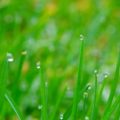
Pollen is the usual suspect for seasonal allergies, but mold could also be causing your symptoms this spring. While indoor molds can cause problems all year, outdoor molds tend to be dormant in the winter and reemerge around the same time as pollen. Because seasonal mold allergies have a similar timeline and symptoms as pollen allergies, it can be difficult to know which allergen is responsible for your runny nose. While neither allergy can be cured, identifying the source of your symptoms can help you to treat them.
Warm, humid weather and moist conditions are most hospitable to molds. Outdoor molds generally become a problem in the spring when they grow in soil, in rotting wood, and on plants that have died during the cold months. Molds are a type of fungus that produces spores which invade the air. Mold allergy sufferers experience irritation when they breathe in the mold spores, just as pollen causes allergy symptoms when it's inhaled.
Many of the same strategies for dealing with pollen allergies can be applied to mold. Here are a few tips to consider:
•Check the mold count. Consult the National Allergy Bureau for the mold count in your area. If it's very high, try to stay inside. Keeping your house and car windows closed is also a good idea.
•Don't rake or mow your lawn. If it's absolutely necessary to do outdoor work, wear a mask.
•Consult an allergist. A professional can figure out which seasonal allergen has been bothering you. Allergists can also prescribe nasal steroids or immunotherapy, which may be useful in addition to over-the-counter antihistamines. For general information about mold allergies, you can also consult the Asthma and Allergy Foundation of America or the American Academy of Allergy, Asthma & Immunology.
To learn more about allergy control products, visit Allergy Be Gone's store today!









